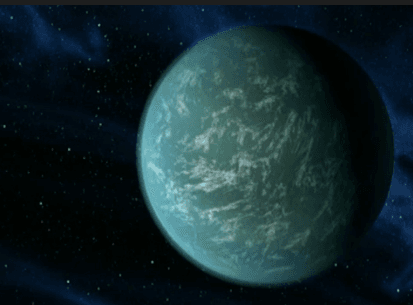VIDEO: New planet, possibly habitable, discovered by NASA scientists
Scientists think the planet Kepler 22b might be just the right place for finding life. It’s a newly discovered planet about 600 light years from Earth. (Photo from CBC video.)
NASA revealed this week that its Kepler space telescope had found an Earth-like planet in what’s known as the habitable-zone of a Sun-like star.
Though the planet is light years away, it offers the most tantalizing hope yet that there may be another planet out there that can support life.
“It’s pretty exciting, because really we’re less than a few steps away from finding out if life is really out there,” said Cam Cronin, a Canadian actor and journalist interested in space.
Keplar 22b, as the planet is called, is about 2.5 times larger than Earth and probably has an average temperature of 72 degrees. Perfectly comfortable. It’s year is about 290 days, also similar to Earth’s 365 days.
“The second thing that’s exciting is it’s orbiting a star very, very similar to our own sun,” said Natalie Batahla, a NASA scientist on the Kepler project.
No one’s ready to proclaim that we’ll find human-like creatures on the planet, though there are high hopes for some sort of life there, despite it’s somewhat larger size.
“This is a phenomenal discovery in the course of human history,” said Geoff Marcy, a planet hunting scientist at the University of California, Berkeley, in an email to the Washington Post. “This discovery shows that we Homo sapiens are straining our reach into the universe to find planets that remind us of home. We are almost there.”
So far, the Kepler projects has identified 139 potentially habitable planets, after more than 2,300 reviewed. Though Kepler-22b is a bit larger than ideal, it’s one of the planets closest to Earth in size.
